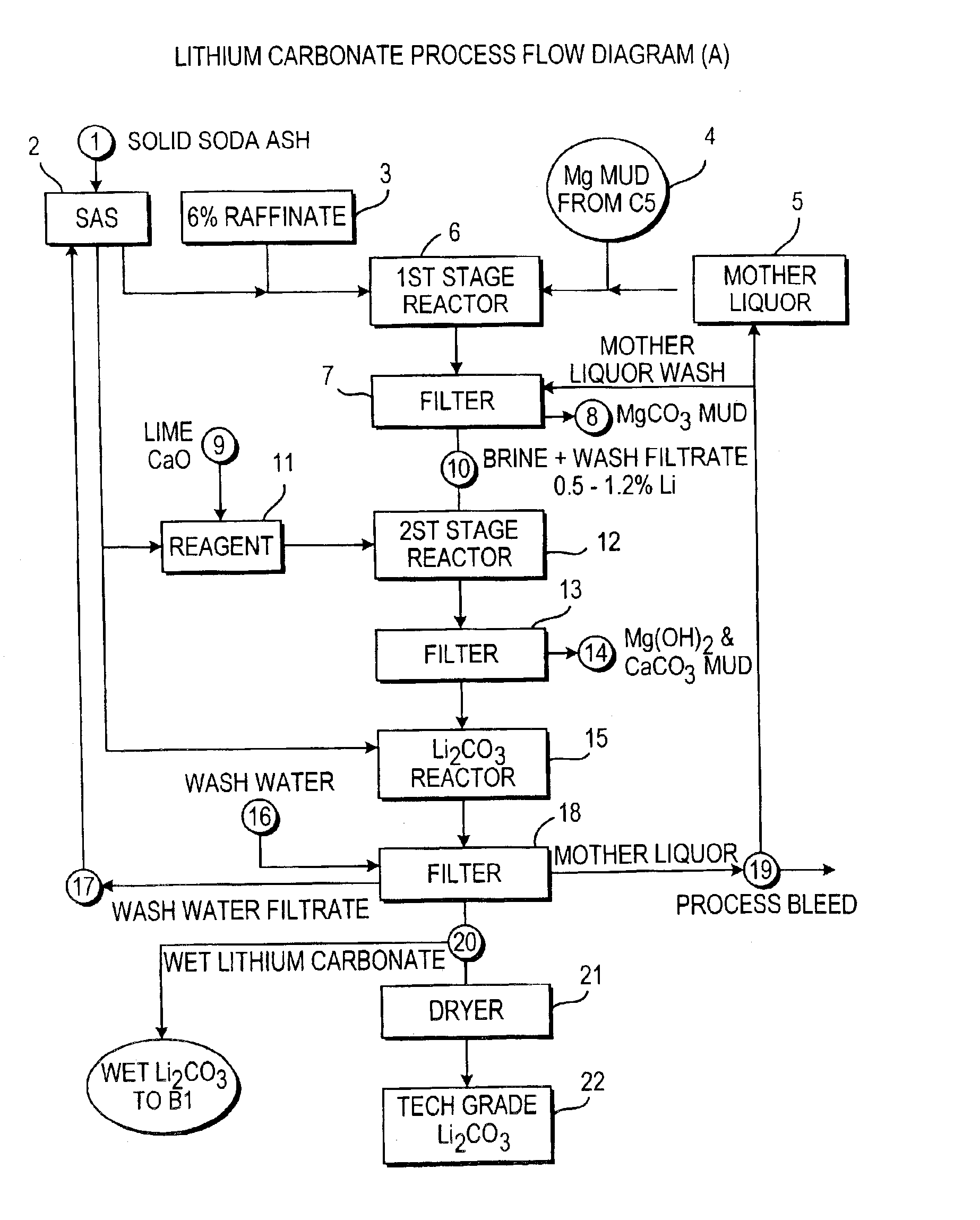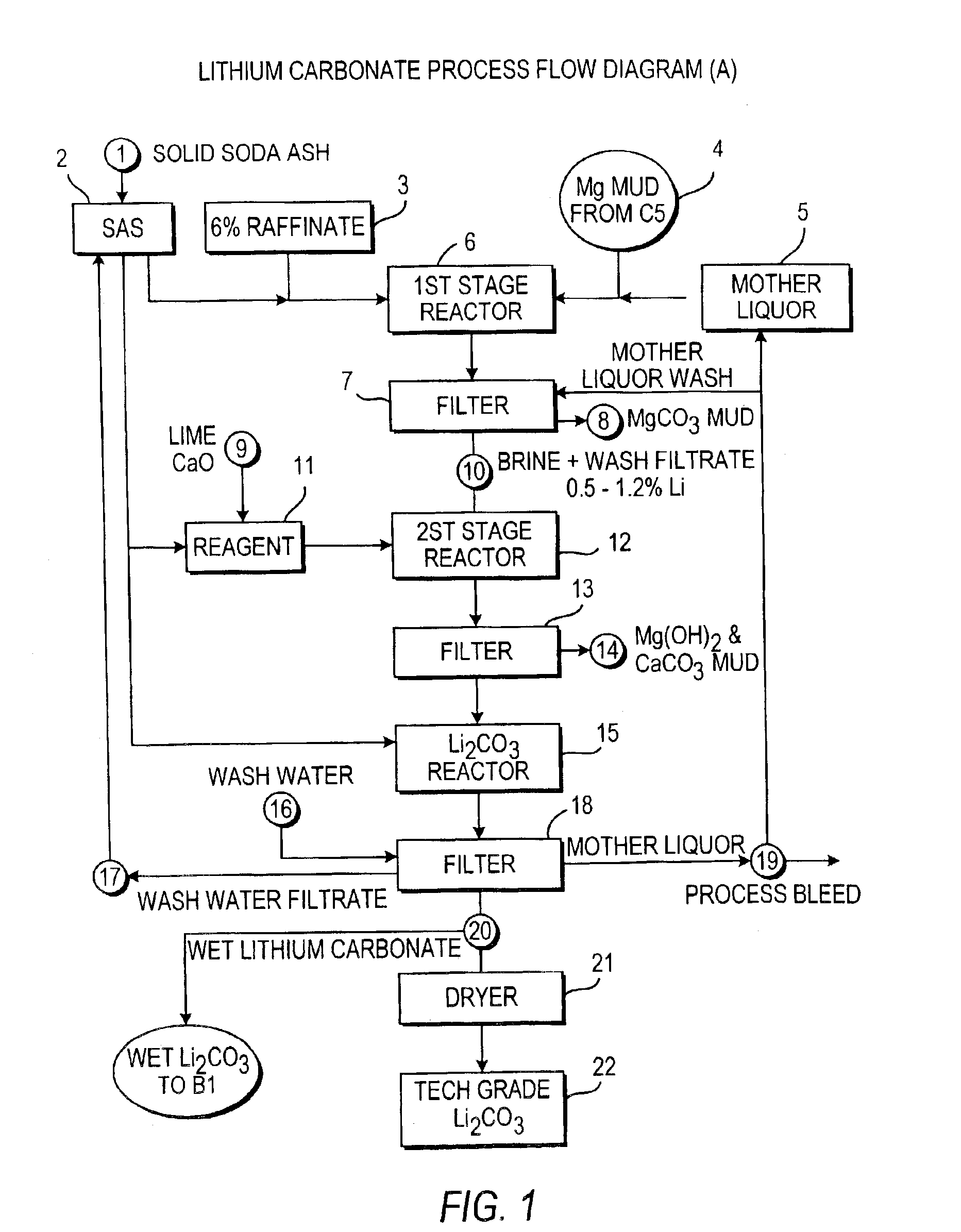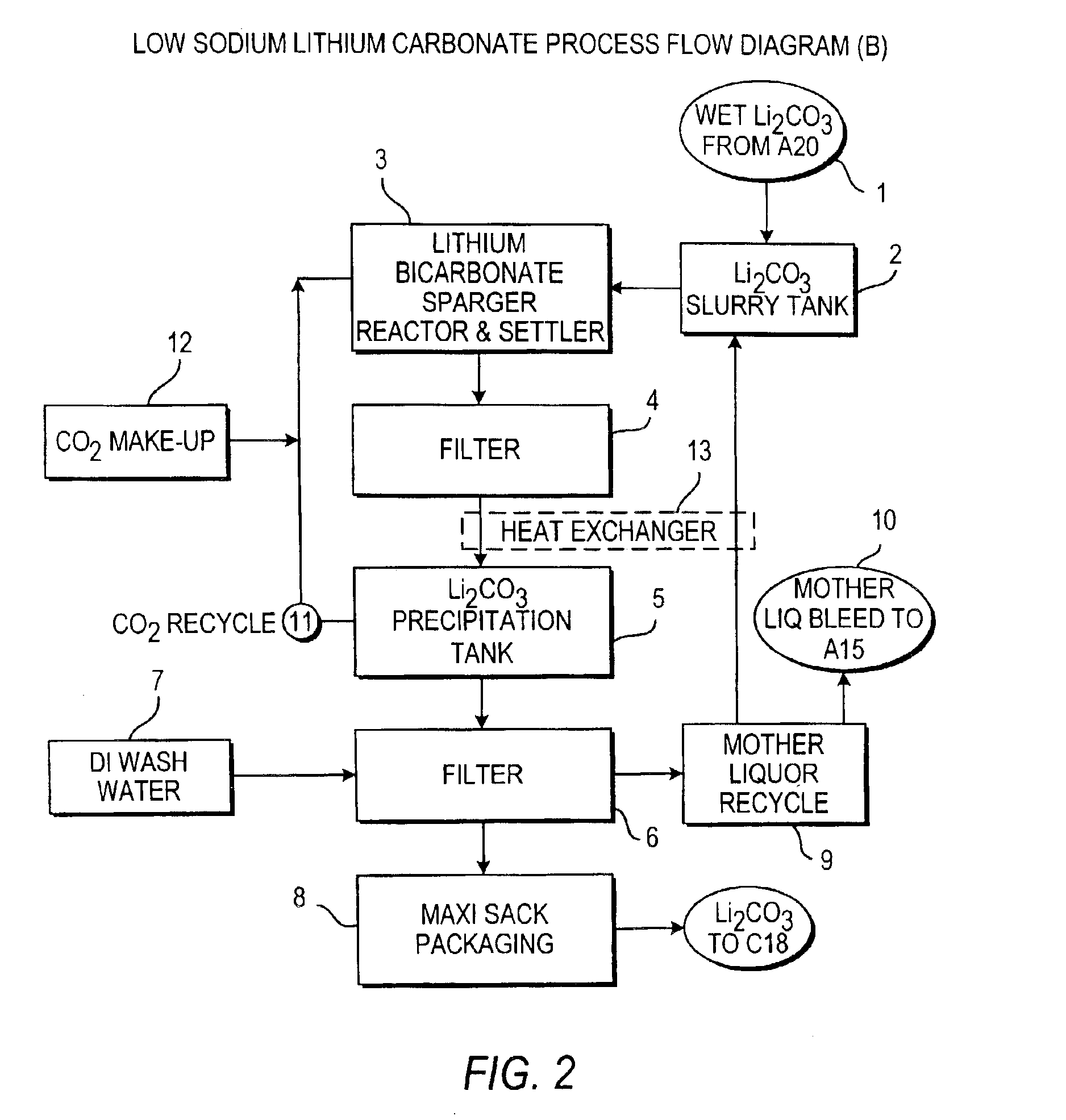Production of lithium compounds directly from lithium containing brines
a technology of lithium containing brine and lithium compounds, which is applied in the direction of lithium halides, magnesium compounds, lithium compounds, etc., can solve the problems of inability to produce low sodium lithium carbonate directly, and the prior art is not practiced today, so as to facilitate carbon dioxide absorption and constant liquid volume
- Summary
- Abstract
- Description
- Claims
- Application Information
AI Technical Summary
Benefits of technology
Problems solved by technology
Method used
Image
Examples
example 1
Preparing Lithium Chloride Directly from 6 wt % Lithium Brine
[0145]Low boron raffinate feed containing 6% lithium and lime were fed into the liming tank where they were mixed at a weight ratio of 15% lime to brine, or until a pH greater than 11.0 as measured on a filtered sample diluted 1:10 with water. The slurry produced in the liming tank was filtered to separate the magnesium free brine from the Ca / Mg mud. The brine was then cooled to minus 20° C. to reduce the sodium content to less than 0.05 wt % sodium in the brine and filtered. The low sodium brine was sent to the purification tank. In the purification tank water was added to dilute the magnesium free low sodium brine to 33% lithium chloride. Hydrochloric acid was added to adjust the pH to 4.0 and barium chloride was added to precipitate barium sulfate from the brine. The pH was raised to less than 10.0 with lithium hydroxide monohydrate and lithium oxalate was added with CaC2O4 solids to precipitate calcium oxalate. The sol...
example 2
[0148]Alternatively, the calcium and magnesium content in the purified brine in Example 1 was reduced by passing through an ion exchange column containing Amberlite IRC-718. The high purity lithium chloride obtained in this manner contained calcium <0.0015 wt % and magnesium <0.0001 wt %.
PUM
| Property | Measurement | Unit |
|---|---|---|
| Temperature | aaaaa | aaaaa |
| Temperature | aaaaa | aaaaa |
| Temperature | aaaaa | aaaaa |
Abstract
Description
Claims
Application Information
 Login to View More
Login to View More - R&D
- Intellectual Property
- Life Sciences
- Materials
- Tech Scout
- Unparalleled Data Quality
- Higher Quality Content
- 60% Fewer Hallucinations
Browse by: Latest US Patents, China's latest patents, Technical Efficacy Thesaurus, Application Domain, Technology Topic, Popular Technical Reports.
© 2025 PatSnap. All rights reserved.Legal|Privacy policy|Modern Slavery Act Transparency Statement|Sitemap|About US| Contact US: help@patsnap.com



